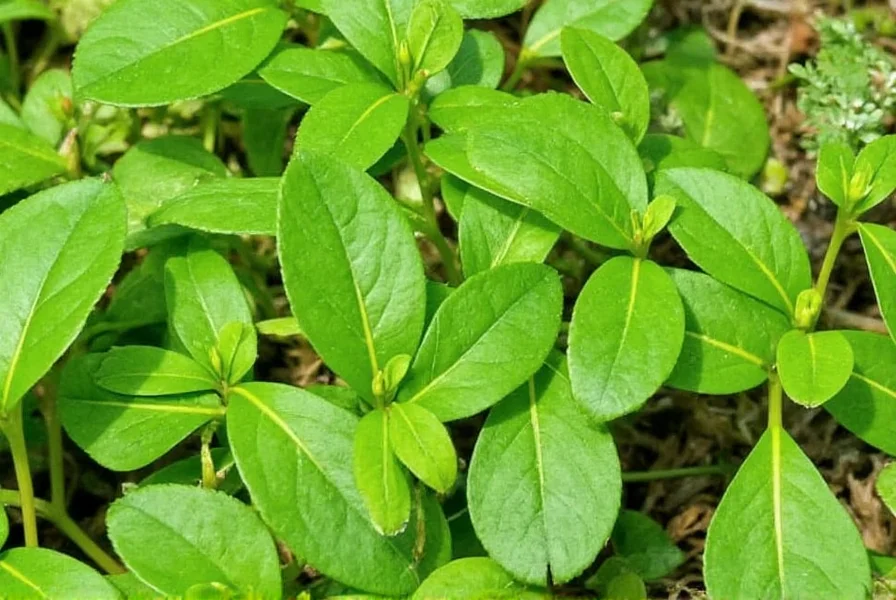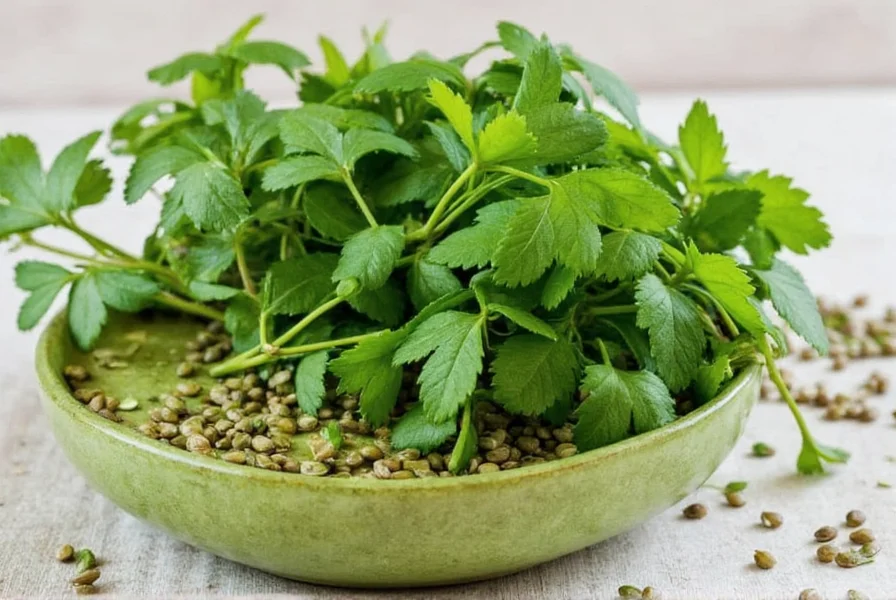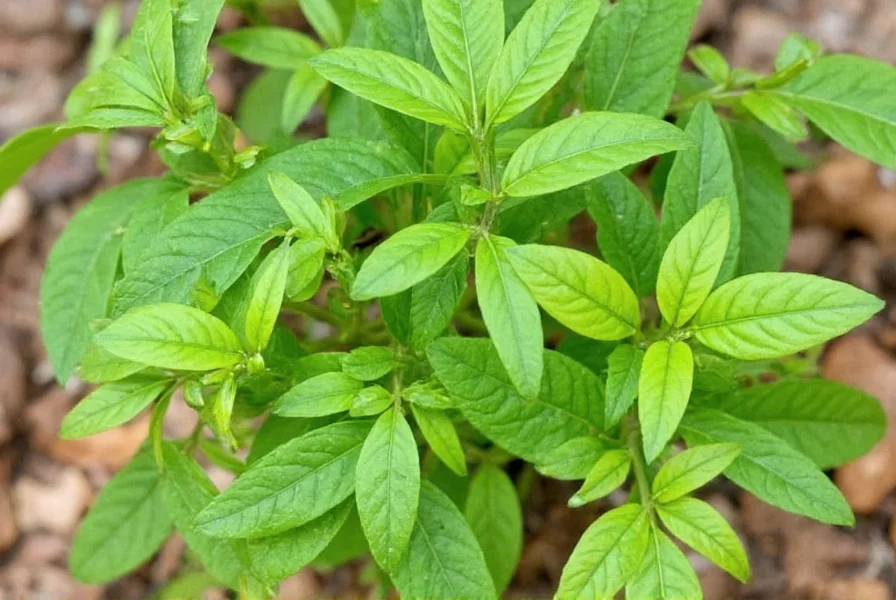Many gardeners confuse Vietnamese coriander with true coriander (cilantro), but they're botanically distinct plants. Persicaria odorata, commonly called Vietnamese coriander or rau ram, produces viable seeds that allow home growers to propagate this heat-tolerant herb year after year. Understanding the unique characteristics of Vietnamese coriander seeds helps gardeners successfully cultivate this valuable culinary plant.
Understanding Vietnamese Coriander Seeds
Vietnamese coriander (Persicaria odorata) belongs to the Polygonaceae family, unlike true coriander (Coriandrum sativum) which is in the Apiaceae family. The seeds appear as small, dark brown to black triangular structures measuring approximately 1-2mm in length. These seeds contain the genetic material needed to grow new Vietnamese coriander plants but lack the culinary flavor compounds found in cilantro seeds (which become coriander spice).
Unlike annual cilantro that readily bolts in warm weather, Vietnamese coriander thrives as a perennial in USDA zones 8-11, making seed propagation particularly valuable for gardeners in temperate climates who want to preserve their plants through winter months. The seeds develop after the plant flowers, typically producing small white or pink blooms that eventually yield mature seeds.
Collecting and Storing Vietnamese Coriander Seeds
Successful seed collection requires timing and proper technique:
| Stage | Timeline | Key Indicators |
|---|---|---|
| Flowering | 60-90 days after planting | Small white/pink flower clusters appear |
| Seed Development | 2-3 weeks after flowering | Flowers fade, seed pods form and turn brown |
| Harvest Time | 4-6 weeks after flowering | Pods dry and begin to split open |
To collect seeds, wait until the seed pods turn brown and begin to dry on the plant. Place a paper bag over selected flower heads to catch falling seeds as pods naturally split open. Store harvested seeds in a cool, dark, dry place in labeled envelopes. Properly stored Vietnamese coriander seeds maintain viability for 1-2 years, though germination rates decline significantly after the first year.

Planting Vietnamese Coriander Seeds Successfully
While Vietnamese coriander propagates more easily through stem cuttings, growing from seed offers genetic diversity and helps preserve heirloom varieties. Follow these evidence-based practices for best results:
- Soil preparation: Use well-draining potting mix with 30% perlite for optimal moisture retention without waterlogging
- Planting depth: Sow seeds 1/8 inch deep, as they require light for germination
- Temperature: Maintain consistent soil temperature between 70-85°F (21-29°C)
- Moisture: Keep soil consistently moist but not soggy during germination
- Light: Provide bright, indirect light (12-14 hours daily)
Germination typically occurs within 14-21 days under ideal conditions. Once seedlings develop their second set of true leaves, transplant them into individual pots. Vietnamese coriander grows slowly from seed compared to propagation through cuttings, requiring 8-12 weeks before plants reach harvestable size.
Culinary Applications and Plant Uses
While Vietnamese coriander seeds themselves aren't used culinarily like true coriander seeds (which become the spice coriander), the mature plant offers exceptional culinary value. The leaves provide a peppery, cilantro-like flavor that remains stable in heat, making it superior to regular cilantro for cooked dishes.
Chefs and home cooks use Vietnamese coriander in:
- Pho and other Vietnamese soups (added at the end of cooking)
- Fresh spring rolls and salads
- Stir-fries and noodle dishes
- Herb-based dipping sauces
The plant's resilience in hot, humid conditions makes it particularly valuable for gardeners in tropical and subtropical regions where regular cilantro struggles to survive summer temperatures.
Common Challenges with Vietnamese Coriander Seeds
Gardeners often encounter these issues when working with Vietnamese coriander seeds:
- Low germination rates: Freshness significantly impacts viability - use seeds harvested within the past year for best results
- Slow growth: Seed-grown plants develop more slowly than cutting-propagated plants
- Confusion with similar plants: Vietnamese mint (Polygonum hydropiper) has similar appearance but different flavor profile
- Overwintering difficulties: In colder climates, indoor seed starting 6-8 weeks before last frost improves success
When seeds fail to germinate, consider alternative propagation methods. Vietnamese coriander roots exceptionally well from stem cuttings placed in water, often producing harvestable plants in half the time required for seed-grown specimens.

Preserving Vietnamese Coriander Through Seasons
For gardeners in temperate climates, seed saving provides the most reliable method for preserving Vietnamese coriander through winter months. While the plant can survive mild winters with protection, freezing temperatures typically kill the above-ground portions. By collecting and storing seeds, you ensure a fresh start each spring.
Consider these preservation strategies:
- Start seeds indoors 6-8 weeks before last frost date
- Use bottom heat to maintain optimal soil temperature
- Grow in containers that can move indoors during cold snaps
- Take cuttings in fall as backup propagation method
Unlike true coriander which completes its life cycle in one season, Vietnamese coriander's perennial nature makes seed saving a valuable skill for continuous harvests. The plant's resistance to bolting in warm weather gives it significant advantages over regular cilantro for year-round production in suitable climates.
Frequently Asked Questions
Can you eat Vietnamese coriander seeds?
No, Vietnamese coriander seeds aren't typically consumed as a spice. While not toxic, they lack the culinary flavor compounds found in true coriander seeds (which become the spice coriander). The primary value of these seeds is for plant propagation rather than culinary use.
How long do Vietnamese coriander seeds remain viable?
Properly stored Vietnamese coriander seeds maintain good germination rates for 1-2 years. Store them in a cool, dark, dry place in airtight containers. Viability declines significantly after the first year, with most seeds losing germination capacity by year three.
Why won't my Vietnamese coriander seeds germinate?
Common reasons include: seeds being too old (beyond 2 years), improper planting depth (should be 1/8 inch deep), inconsistent moisture during germination, or temperatures outside the ideal 70-85°F range. Vietnamese coriander seeds also require light for germination, so burying them too deeply prevents sprouting.
What's the difference between Vietnamese coriander seeds and regular coriander seeds?
Vietnamese coriander (Persicaria odorata) and true coriander (Coriandrum sativum) are completely different plants. Vietnamese coriander seeds are small, black, and triangular, used only for propagation. True coriander seeds are round, yellowish-brown, and used as the spice coriander. The plants have different growth habits, flavors, and culinary applications.
Can I grow Vietnamese coriander from supermarket cuttings?
Yes, supermarket-bought Vietnamese coriander often grows successfully from cuttings. Place 4-6 inch stem cuttings in water until roots develop (usually 7-14 days), then transplant to soil. This method typically succeeds faster than growing from seeds, with harvestable plants available in 4-6 weeks compared to 8-12 weeks for seed-grown plants.











 浙公网安备
33010002000092号
浙公网安备
33010002000092号 浙B2-20120091-4
浙B2-20120091-4